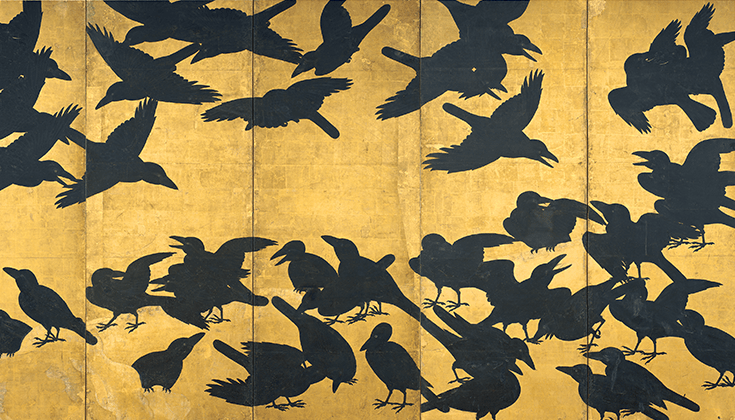In my freshman 12 months of school, my spiritual research class was on the sleepy hour of two o’clock, and to make issues worse the professor was hypnotically soft-spoken and wore drained shades of brown. So on the day that he slowly enumerated the 4 noble truths on the board, I didn’t expertise the flash of perception, which many Buddhist converts discuss; the one factor I felt was my heavy eyelids.
Then I glimpsed motion.
I used to be sitting by the window—daylight pouring in—and a darkish, shiny chook I didn’t have a reputation for had landed on the stone windowsill exterior. If it weren’t for the glass, I may have touched it—I used to be that near its iridescent purple and inexperienced sheen, blunt tail, and yellow invoice. Watching the chook tilting its head because it checked out me with alert, shiny eyes, I used to be all of the sudden wholly targeted.
I’d by no means earlier than paid a lot consideration to birds, however for me this specific one was what Zen grasp Thich Nhat Hanh calls “a bell of mindfulness.” The chook woke me as much as the current second.
It was inevitable: I grew to become each a Buddhist and a birdwatcher.
For me, birding is a type of meditation—it’s simply watching, simply listening. I admire how birding encourages equanimity, the way it helps me relaxation in ambiguity and uncertainty. Within the area, I get a glimpse of small, brown wings disappearing by means of the branches of an oak. Then I look by means of my chook books and see web page after web page of virtually indistinguishable little brown birds with their refined markings and minor variations. Did the chook I see have yellow or tan legs? Was its beak straight or did it curve? I can’t positively determine the chook and I’ve to search out some peace with that.
It’s straightforward to search out symbolism in birds—in the best way they take flight, in the best way they preen and nest and sing. Poets have lengthy made wordy use of their wings, whereas mystics have revered them. In Buddhism, birds are used to show ethics and ideas. They’re metaphors for our muddled, unskillful selves, and likewise symbolize our greatest, no-self selves. Buddhist chook lore goes all the best way again to the start, or so the story goes.
Siddhartha and the Swan
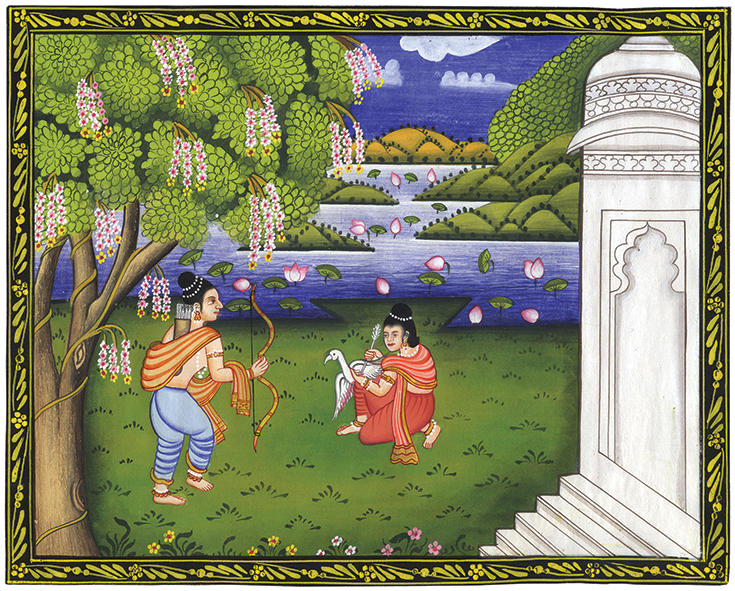

At some point, when the longer term Buddha, Siddhartha, was only a little one, he and his cousin Devadatta went strolling within the forest. Devadatta was an avid hunter, by no means with out his bow and a sheaf of arrows, so when a wedge of swans handed by means of the sky, he aimed on the main chook and pierced its wing. Because the swan fell closely to the bottom each boys ran to it, however it was Siddhartha who arrived first. He cradled the injured creature in his arms and whispered consolation into its curved, milky neck. Then he extracted the shaft of the arrow and rubbed the wound with a cool and soothing herb.
Ultimately, Devadatta caught as much as Siddhartha and demanded he hand over the swan, however Siddhartha refused. When Devadatta endured, Siddhartha instructed that they create the matter to the king, and so in entrance of the entire courtroom Devadatta and Siddhartha every introduced their aspect of the argument. They have been each so persuasive that the courtroom was divided; some individuals thought that the swan belonged to Devadatta as a result of he shot it, whereas others believed that it was Siddhartha’s for nursing it.
Instantly, an aged man appeared and the king requested him his opinion. “The prized possession of each creature is its life,” the elder acknowledged. “As such, a creature belongs to whoever protects it, to not the one who makes an attempt to take its life away.”
Seeing the knowledge on this, the courtroom awarded Siddhartha the swan. He sheltered it till it was absolutely healed, after which set it free.
The Golden Goose
The Buddha usually informed his followers tales about his earlier lives to show them moral classes. In line with one story, he was a person who died and was reborn as a golden goose. He nonetheless remembered his previous household and felt a pang considering of how, since his demise, they have been simply barely scraping by. So he went to them and at their toes he launched one in every of his priceless feathers. “I’ll all the time present for you,” the goose promised. Then every day after that he gave the household one other feather till that they had sufficient gold to purchase comfortable beds and wealthy meals.
However his former spouse grew grasping, and someday she lured the goose near her with candy phrases. Then she grabbed him, pinned his beating wings between her chest and the criminal of her arm, and plucked all of his resplendent feathers. Now, the goose couldn’t fly away, so his spouse threw him right into a barrel, fed him skinny scraps of meals, and waited for his feathers to develop again. However after they did, she was disillusioned: as a substitute of the golden glint she hoped for, the brand new feathers have been as white as icy silence.
The Rooster of Attachment
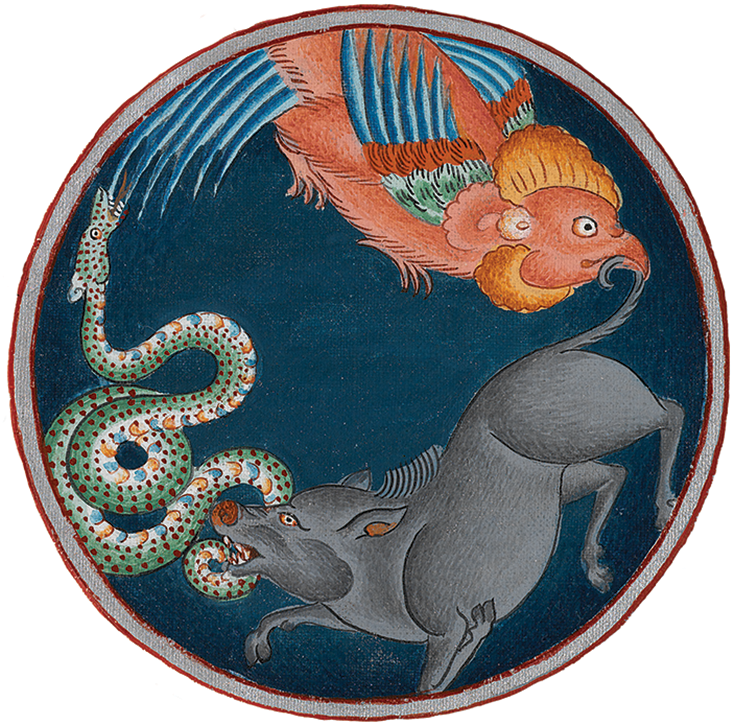

Buddhist teachings place a chook on the very heart of the wheel of life, the bhavacakra. At root, Buddhism is about how we are able to discover true liberation from the struggling of samsara, the wheel of cyclic existence. The bhavacakra, which some say the Buddha himself created as a instructing instrument, is each a diagram to assist us see why we’re caught in samsara and a map to assist us discover freedom from it.
On the hub of the wheel of life there are three animals: a chook, a pig, and a snake. In English we consult with this chook as a rooster or cock, however Tibetan trainer Ringu Tulku says that it’s really an Asian species, one that’s obsessively connected to its mate. The chook, subsequently, represents need, clinging, or attachment, whereas the snake symbolizes aggression or aversion and the pig symbolizes ignorance or indifference. Collectively, these three animals symbolize the three poisons—ardour, aggression, and ignorance—that drive the wheel of samsara.
The wheel of life is each a diagram to assist us see why we’re caught in samsara and a map to assist us discover freedom from it.
When you go searching, you could discover that the entire effectively of our world is poisoned. From the spider crawling in your shin to the local weather disaster to a field of candies with creamy facilities—every thing in our unenlightened lives all the time comes right down to “I would like it,” “I don’t need it,” or “I don’t care about it.” It’s by means of this attachment, aversion, or indifference that karma or motion arises, which in flip provides rise to struggling. In brief, the three poisons are the venomous gasoline that drives samsara.
Look once more on the animals within the heart of the wheel. Steadily, the chook and snake are depicted popping out of the pig’s mouth, whereas on the identical time they’re clenching his tail. This hints at how the poisons bleed into one another: need and aversion not solely stem from ignorance, in addition they feed it.
As Roshi Bernie Glassman places it, “The fundamental poison is ignorance, which implies being completely at nighttime, not seeing life as it’s due to selfish concepts.” However, he continues, “If we’re rid of the self, the three poisons grow to be transmuted into the three virtues of the bodhisattva. Ignorance turns into the state of complete nondiscrimination, so we not discriminate between good and unhealthy; as a substitute we take care of what’s within the acceptable approach. Equally, anger turns into dedication and greed turns into the selfless, compassionate need of the bodhisattva to assist all beings notice the enlightened approach.”
Peacock within the Poison Grove
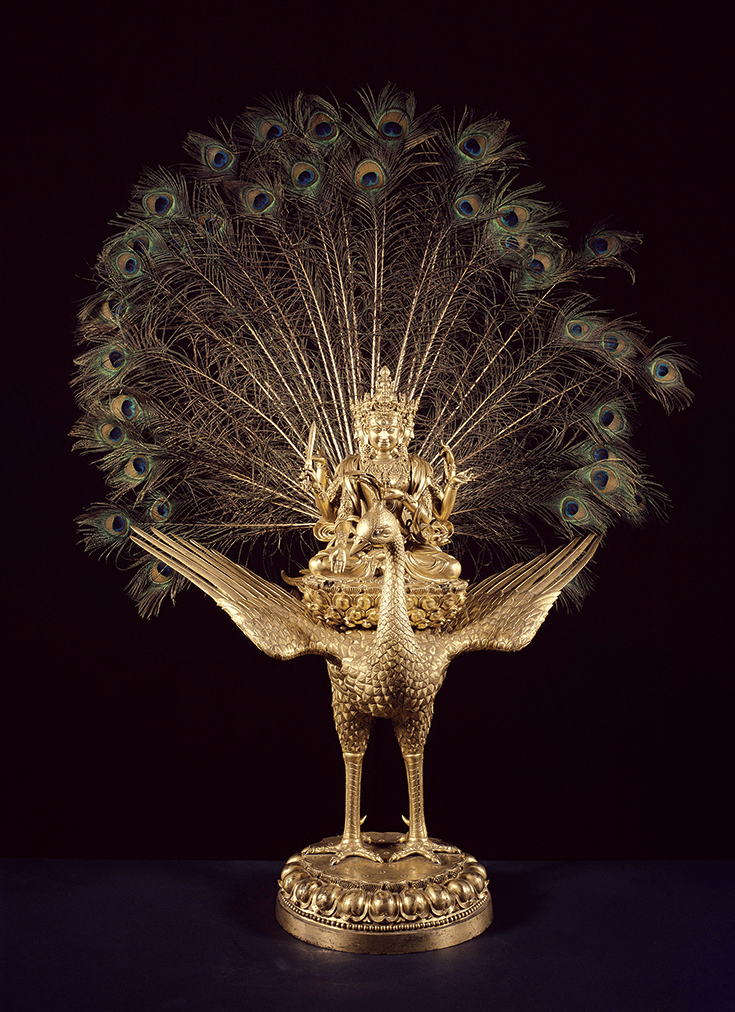

When the monsoon began and the Buddha and his group of monks and nuns gathered for the annual wet season retreat, they’d usually hear the plaintive name of the peacock. Ever since then, this chook with its electrical blue throat and tail strewn with eyes has captured the Buddhist creativeness.
Peacocks are credited with with the ability to eat toxic crops, snakes, and bugs, and never solely survive however thrive. For that reason, these boldly lovely birds symbolize a selected approach that we are able to relate to our psychological and religious poisons.
Within the Vajrayana custom it’s stated that there are 3 ways of coping with proverbial poison. The primary, which is arguably the least harmful choice, is to keep away from it. If in case you have a poison tree in your yard, chop it down. When you really feel rage welling up in you, chorus from venting it. And if everybody else is ingesting scotch, order apple juice.
However poison—if used accurately—is usually a drugs, so possibly you’d wish to put your axe down and let that tree in your yard reside. It’s essential to recollect, although, that you just have to be skillful to make use of this methodology or else you merely find yourself poisoned. If you wish to use the leaves of the poison tree as drugs, you want to know the proper dosage to make use of and the correct time to take it. And if you wish to use your so-called vices and unwholesome psychological states as the trail to enlightenment, you really want to know methods to rework them.
To the peacock, poison isn’t any aside from nourishment.
Lastly, within the third approach of coping with poison, we take a web page from the peacock’s playbook. The peacock struts over to that tree in your yard and simply gobbles down a complete venomous department as a result of, to the peacock, poison isn’t any aside from nourishment. It’s what creates the sensible plumage.
Tenzin Wangyal, a lineage holder within the Bön Dzogchen custom, places the peacock’s methodology into religious phrases: “As an alternative of avoiding or manipulating poison, you host the poison. You convey bare consciousness on to the ache or poison, and uncover that the true floor of being has by no means been poisoned. In so doing, the ache liberates by itself.”
The Chicken That Stormed Heaven


Fabulous and fantastical, Garuda is the lord of birds in each Buddhist and Hindu traditions. In line with legend, Garuda had a five-hundred-year incubation after which hatched absolutely fashioned. His golden physique was so luminous that he was mistaken for the god of fireplace and his wings beat with such vigor that the earth shook.
At some point, Garuda’s mom Vinata and her sister had a disagreement concerning the coloration of a horse’s tail, and apparently this sister was fairly testy, as a result of to get revenge she kidnapped Vinata and held her ransom in a serpent-pit jail. Amrita, the nectar of immortality, was to function fee, and Garuda—determined to free his mom—stormed heaven to steal it.
As a result of Garuda hatches absolutely mature, he represents the Vajrayana view that enlightenment can occur absolutely on the spot.
After that, nonetheless, issues didn’t go fairly as deliberate. By way of subterfuge, Garuda accomplished his rescue mission, however the gods have been sizzling on his heels they usually finally—with huge effort—pried the amrita from his beak. Within the fray, a couple of drops fell on some sharp blades of grass, and serpents licked these drops up, without end forking their tongues. Furthermore, the god Vishnu managed to subdue Garuda and, taking him as his automobile, granted him immortality.
Initially, Garuda was all the time depicted straightforwardly as a big, highly effective chook. Later photographs, nonetheless, present him as a “bird-man.” In Tibetan iconography, he has the torso and arms of a human, but his thighs are feathered and culminate in talons and he has the fierce head of an eagle. It’s stated that his two horns symbolize the 2 truths, relative and supreme, whereas his two angelic wings symbolize the union of methodology and knowledge. As a result of Garuda hatches absolutely mature, he represents the Vajrayana view that enlightenment can occur absolutely on the spot, with out a lengthy gestation. As a result of he extends his wings with out limits and soars fearlessly into house, he represents absolute confidence.
Because the lord of the skies, Garuda is historically seen as an enemy of the lion, the lord of the earth. However within the Tibetan creativeness, the rivals mate and provides start to a beast that has the physique of a lion and the wings and horns of Garuda. A logo of the union of earth and sky, the Garuda-lion is one in every of what are referred to as the three victorious creatures within the struggle towards disharmony. The opposite two are additionally born of animal enemies. The fish-otter’s physique is roofed within the glossy, darkish fur of an otter, however on the neck this fur provides method to scales. The makara-conch, then again, is a dragonish water-monster, with its head and mane bursting from a spired shell.
Ikkyu’s Crow
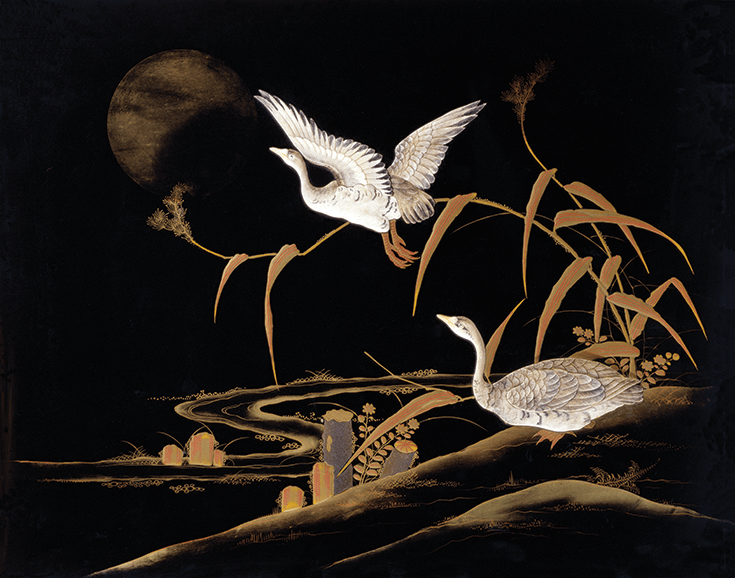

There is just one factor extra magical than wildly inconceivable avian-mammalian hybrids—a fully bizarre chook. In 1420, Ikkyu, the celebrated Zen grasp, poet, and troublemaker, was meditating in a ship on Lake Biwa when he heard a crow cawing and located himself rattled into satori, an expertise of enlightenment. “One pause between every crow’s/reckless shriek Ikkyu Ikkyu Ikkyu,” he wrote. “No nothing/solely these wintery crows shiny black within the solar.”
Past being a fairly image, past being a personality in a morality story, birds are simply what they’re they usually can disclose to us what we’re. “All I’m is the birds singing and fluttering,” stated the late meditation trainer Toni Packer. “Birdcalls and the songs of the breeze don’t exist when the thoughts is filled with itself.”
Do you do not forget that darkish, shiny creature that, for me, made a nest within the 4 noble truths? Effectively, virtually as quickly as class set free I discovered a buddy who may inform me about my thriller chook, and at first I used to be disillusioned by what I realized.
It was a European starling.
That’s, in fact, a stunning identify. It has all the traditional attract of the Previous World, plus—with a star—it’s virtually celestial. However European starlings are worse than ho-hum widespread birds; they’re an invasive species stealing the nest holes of purple martins and swallows and nuthatches. They have been launched in 1890 when some hair-brained people determined to launch sixty of them in Central Park as a result of they wished all of the birds talked about in Shakespeare’s collected works to fly free in North America. Now, from Alaska to Central America, European starlings are perched on rubbish cans pecking at moldy sandwiches; they’re mobbing lawns; they’re shitting soiled white on shiny vehicles. However this, all the identical, is the reality: Typically—even when it’s only for a second—they nonetheless wake me up with their unmusical track.


